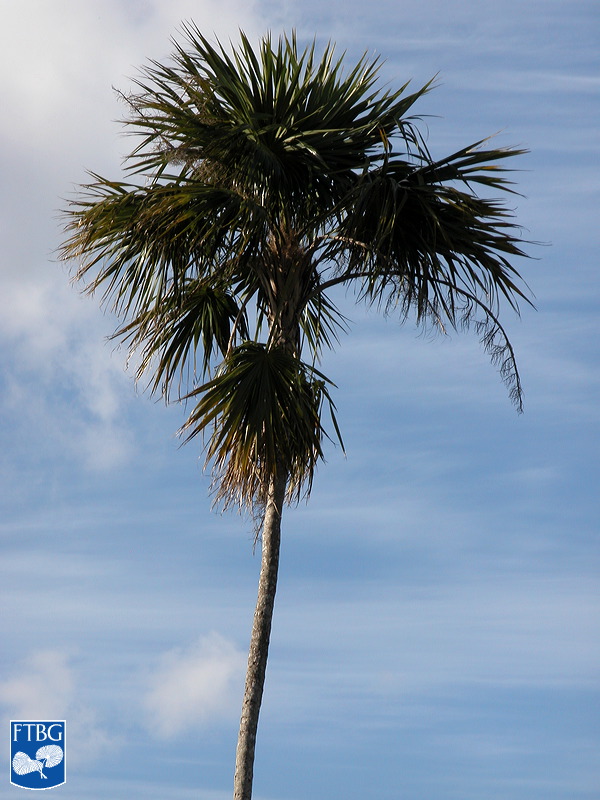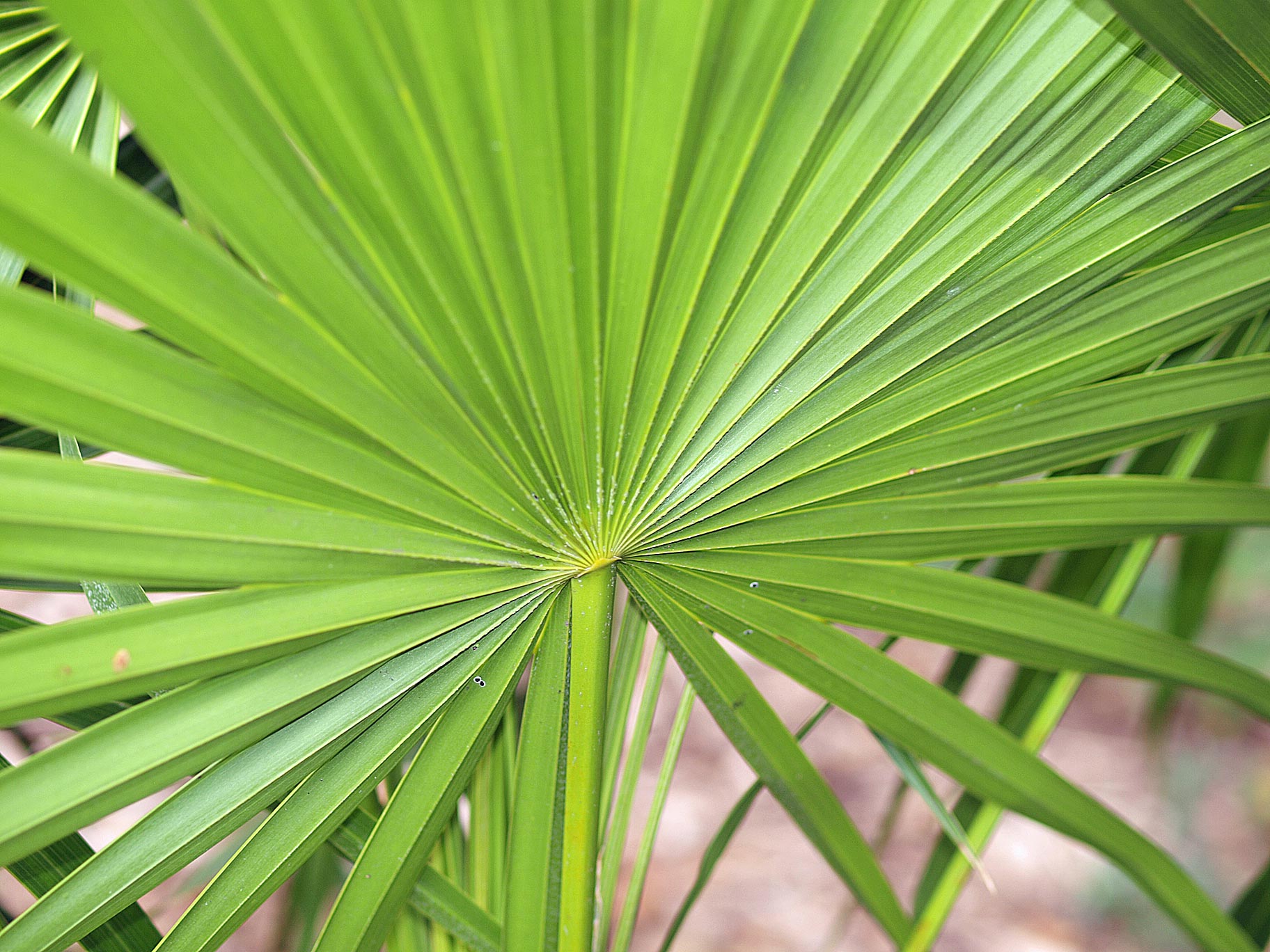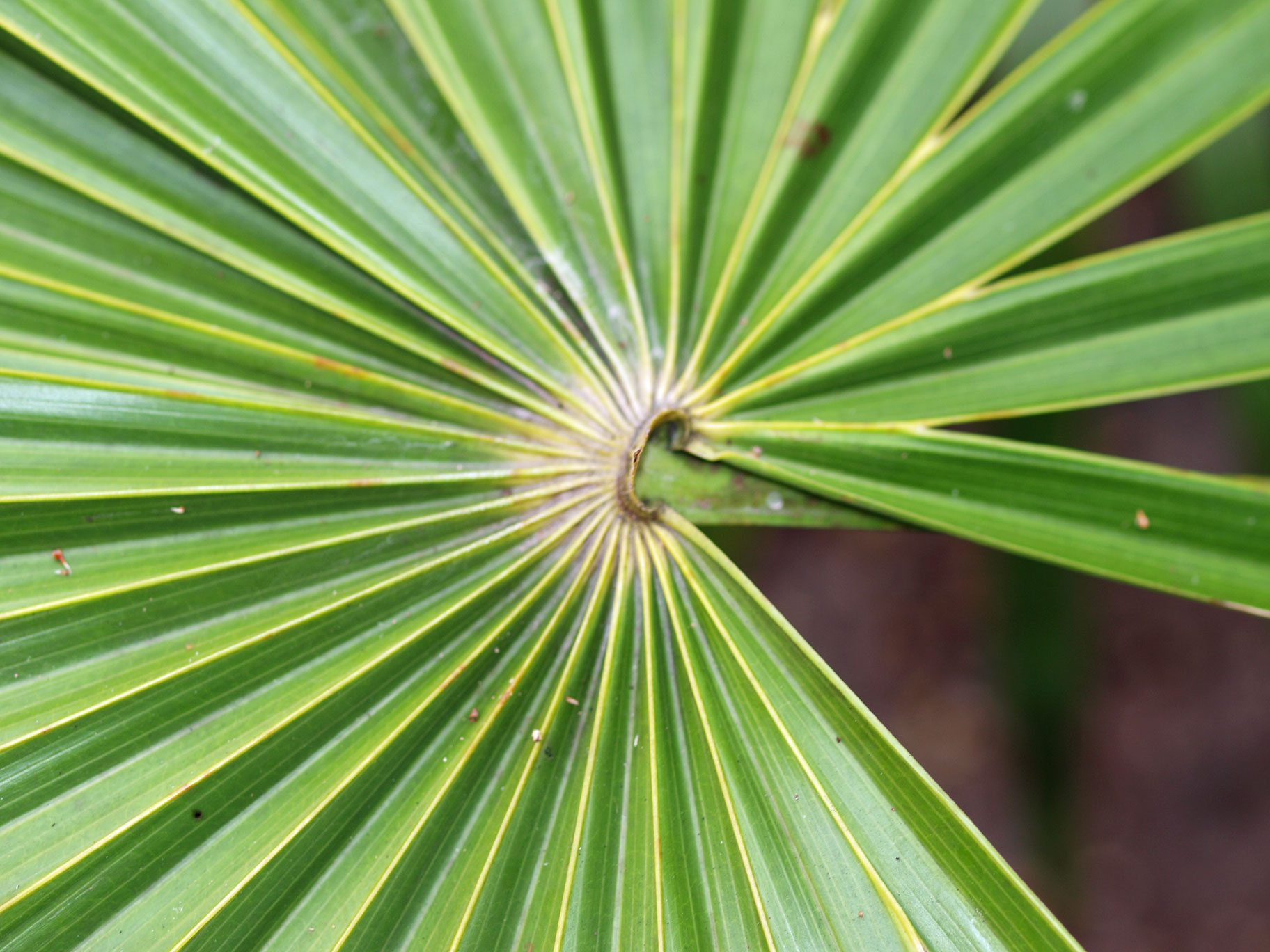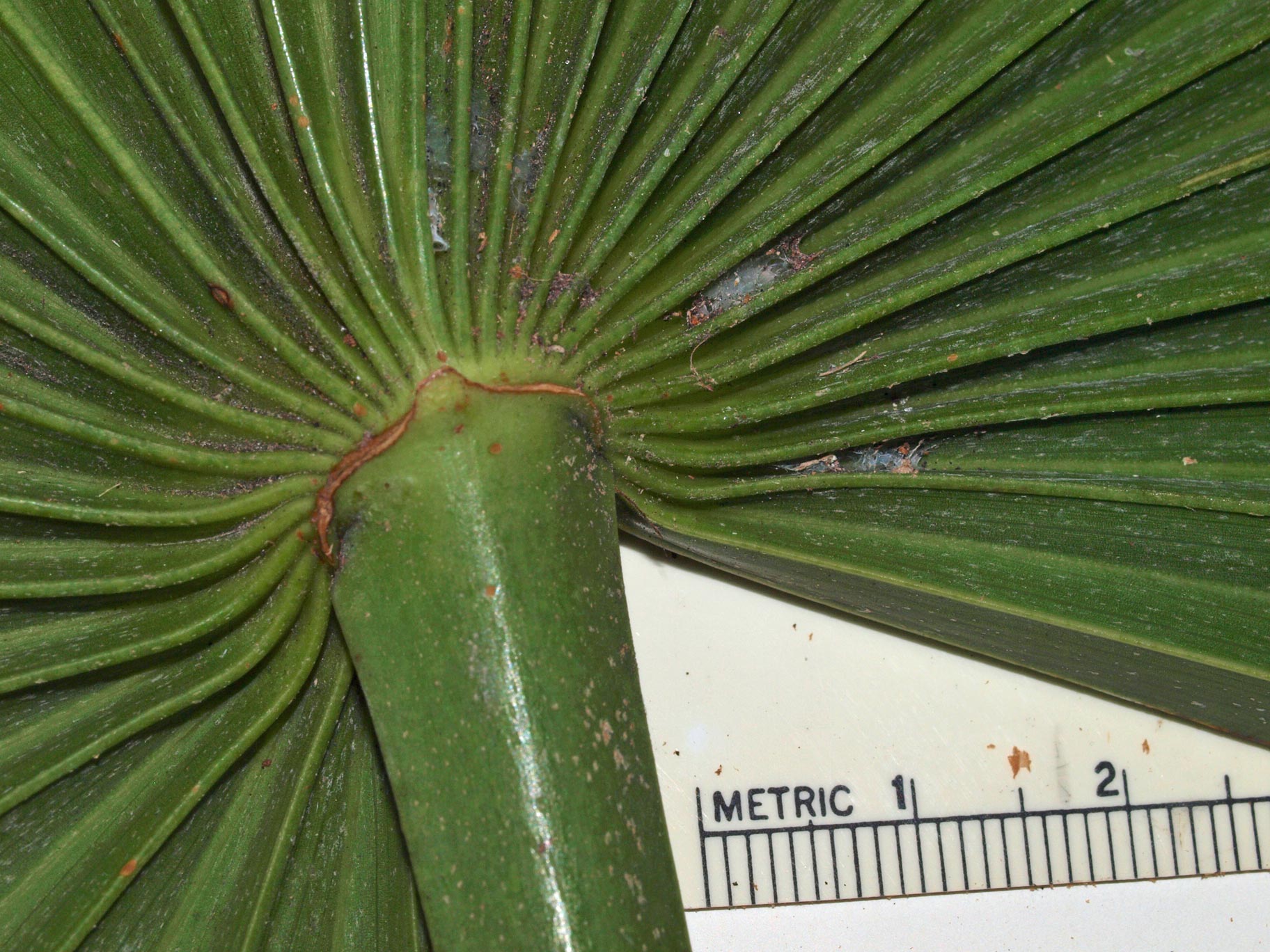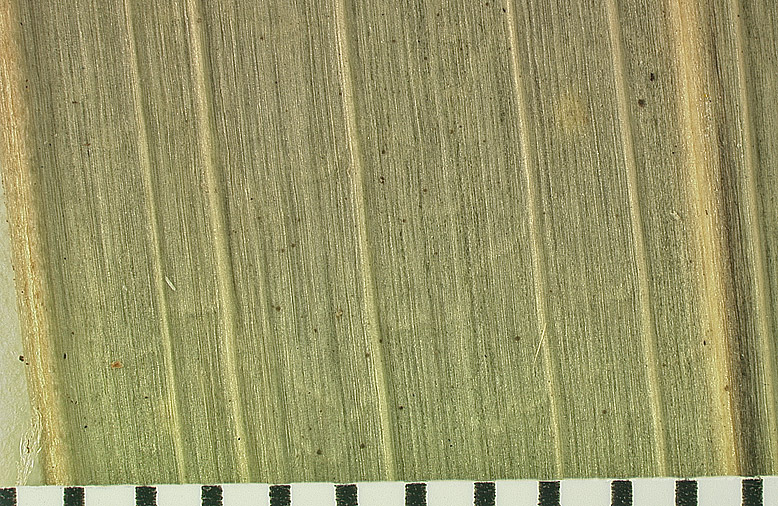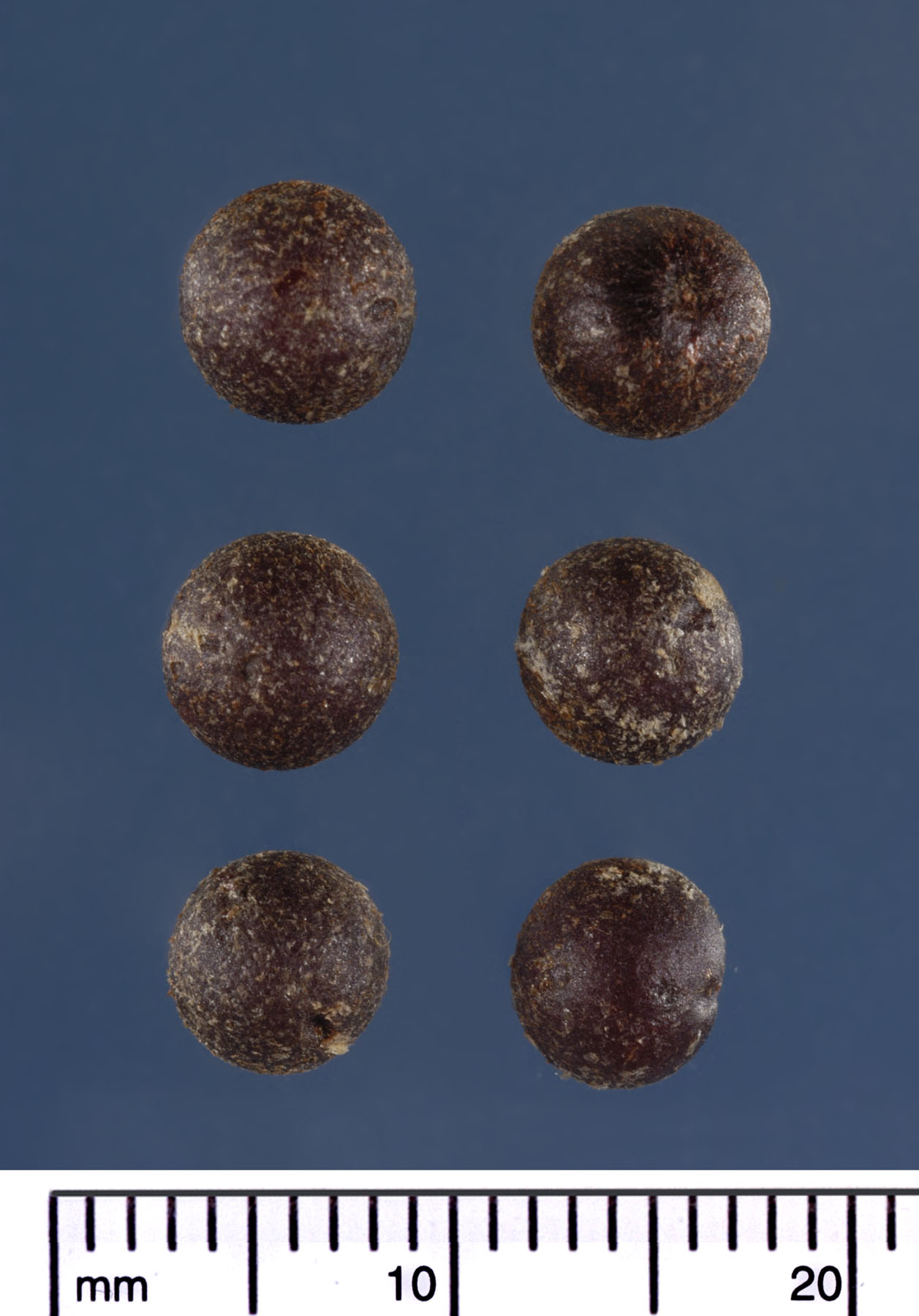Thrinax radiata
|
Thrinax radiata habit. Photograph courtesy of Fairchild Tropical Botanical Garden, Guide to Palms http://palmguide.org/index.php |
|
Thrinax radiata leaf blade |
|
Thrinax radiata adaxial hastula |
|
Thrinax radiata adaxial hastula (view from above) |
|
Thrinax radiata abaxial hastula |
|
Thrinax radiata fibers at leaf base |
|
Thrinax radiata close view of abaxial leaflet segment with midrib and secondary veins |
|
Thrinax radiata transverse veinlets in leaf segment of dried specimen |
|
Thrinax radiata seeds. Photograph courtesy of Mariana P. Beckman, DPI |
Common name
Florida thatch palm, silk-top thatch palm
Description
Stems: Solitary, erect gray to brown stems, to 12 m tall and 13 cm in diameter, with obscure, incomplete leafleaf:
in palms -- the leaf blade (which is usually divided into leaflets or leaf segments), the petiole (or leaf stalk) and the sheath (which forms the attachment of the leaf to the stem)
scars; the upper reaches covered with matted fibers and split leafleaf:
in palms -- the leaf blade (which is usually divided into leaflets or leaf segments), the petiole (or leaf stalk) and the sheath (which forms the attachment of the leaf to the stem)
bases, and the base bulging with a mass of roots. Leaves: Palmatepalmate:
like the palm of a hand; fan palms have palmate leaves that are usually divided into leaf segments arising from a central point, although a fan palm may have entire leaves (e.g., <em>Licuala grandis</em>)
, induplicateinduplicate:
Most palm leaflets or leaf segments are obviously folded. If the folds create a V-shape, with the midrib lower than the margins (so that rain might fall "into a valley"), the folding is induplicate.
, unarmed, with a circular blade 1-1.5 m across, divided at least half its length by numerous, lanceolatelanceolate:
term to describe leaves and leaflets that are longer than wide and widest below the mid-point; lance-shaped
segments with drooping tips; with a petiole as nearly as long as the blade; the leafleaf:
in palms -- the leaf blade (which is usually divided into leaflets or leaf segments), the petiole (or leaf stalk) and the sheath (which forms the attachment of the leaf to the stem)
sheath with fibrous margins. The upper leafleaf:
in palms -- the leaf blade (which is usually divided into leaflets or leaf segments), the petiole (or leaf stalk) and the sheath (which forms the attachment of the leaf to the stem)
surface is dull green; the undersurface, lighter, yellowish green. Flowers and fruits: Inflorescenceinflorescence:
the reproductive structure of a flowering plant, including palms, consisting of flowers and associated bracts
1-1.2 m, emerging through split leafleaf:
in palms -- the leaf blade (which is usually divided into leaflets or leaf segments), the petiole (or leaf stalk) and the sheath (which forms the attachment of the leaf to the stem)
bases, arching and branched to two orders. The white flowers have both male and female parts. The fruits are small (7-8 mm in diameter), spherical and white when ripe; pedicelpedicel:
a floral stalk
conspicuous, usually more than 1 mm long.
Diagnostic features
Solitary, upright palm with palmatepalmate:
like the palm of a hand; fan palms have palmate leaves that are usually divided into leaf segments arising from a central point, although a fan palm may have entire leaves (e.g., <em>Licuala grandis</em>)
leaves that have leafleaf:
in palms -- the leaf blade (which is usually divided into leaflets or leaf segments), the petiole (or leaf stalk) and the sheath (which forms the attachment of the leaf to the stem)
blade colored yellow green on the underside, drooping leafleaf:
in palms -- the leaf blade (which is usually divided into leaflets or leaf segments), the petiole (or leaf stalk) and the sheath (which forms the attachment of the leaf to the stem)
tips, leafleaf:
in palms -- the leaf blade (which is usually divided into leaflets or leaf segments), the petiole (or leaf stalk) and the sheath (which forms the attachment of the leaf to the stem)
sheaths that split at the base, and small, white fruit on stalks over 1 mm long.
May be confused with
Coccothrinax species, but they have chocolate brown to purple black fruit and leafleaf:
in palms -- the leaf blade (which is usually divided into leaflets or leaf segments), the petiole (or leaf stalk) and the sheath (which forms the attachment of the leaf to the stem)
bases that do not split.
Distribution
Native to Florida and the Caribbean
Additional comments
This species is listed as endangered by the state of Florida.
Scientific name
Thrinax radiata Lodd. ex Schult. & Schult.f.
Family
Arecaceae/Palmae
Synonyms
Coccothrinax martii Griseb. & H. Wendl. ex Griseb.
Coccothrinax radiata (Loddiges ex Schultes & Schultes f.) Sargent ex K. Schumann
Porothrinax pumilio Griseb.& H. Wendl.
Thrinax elegans Hort. ex Schult.f.
Thrinax floridana Sarg.
Thrinax martii Griseb.& H. Wendl.
Thrinax wendlandiana Becc.


